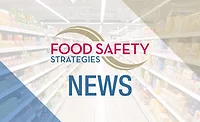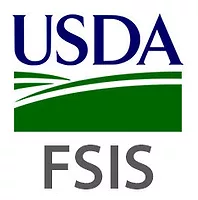Produce Safety: Protecting Public Health from the Ground Up

Two years ago on January 16, 2013, the U.S. Food and Drug Administration (FDA) published its original draft rule on produce safety under the Food Safety Modernization Act (FSMA). The rule, Standards for the Growing, Harvesting, Packing, and Holding of Produce for Human Consumption (Produce Safety Rule), was aimed to prevent or at least to reduce contamination of produce with biologically hazardous material. The standards in the proposed rule sought to further efforts which already existed in the agriculture industry to reduce the incidence of foodborne illness.
During the public comment period for the first draft of the Produce Safety Rule, concerns were raised by farmers, agricultural organizations and consumers alike about the flexibility and overall implementation of the proposed new standards. In response to those concerns, FDA issued revised supplemental rules on September 29, 2014. During the public comment for the revised proposed rule another 2,400 comments were submitted. While many of the comments expressed positive reaction to the revisions, additional concerns and suggestions were lodged.
It remains to be seen what additional changes will be made to the Produce Safety Rule when it is issued in final form on October 31, 2015. Some of the evolving key provisions in the rule are noted below, along with the ongoing public discussion between FDA and members of the industry.
1. Agricultural Water Quality Standards and Testing
Draft: The first draft of the Produce Safety Rule provided that growers are required to ensure that water intended or likely to come in contact with harvestable produce or food-contact surfaces is of safe and sanitary quality, and that inspection, follow-up testing and treatment is conducted to ensure ongoing safety.
Comments and FDA Response: Commenters familiar with microbial presence in crops provided data on the natural microbial die-off that immediately precedes the crop harvest. This die-off process would obviate the need for agricultural water to meet safety standards when it is first introduced to the crop. In its revised rule published in 2014, FDA stated that the water quality standard will be updated to reflect the 2012 Environmental Protection Agency water quality criteria. More importantly, farmers who do not meet water quality standards initially will be allowed to use other specified remedial measures and will then be allowed to use the water. However, any alternative remedial measures must provide the same level of public health protection. Finally, in the revised rule FDA recognizes that different sources of untreated water pose different levels of risk of contamination. A tiered approach to testing is proposed which will less burdensome for farmers, yet still protect public health.
2. Biological Soil Amendments of Animal Origin
Draft: The first draft of the Produce Safety Rule contained restrictions relating to biological soil amendments of animal origin (i.e., manure). These soil amendments must satisfy specific microbial standards. Biological soil amendments of animal origin also must be classified as treated or untreated and handled according to that classification. They must also be subjected to treatment, and must be applied using methods and timing appropriate to their classification. A 9-month minimum time interval must be implemented between application of manure and crop harvest. A 45-day minimum time interval must be implemented between application of composted manure (i.e., hummus) and crop harvest.
Comments and FDA Response: Comments from the industry challenged the 9-month proposed minimum time period, noting that this time period could vary based on different factors such as climate, soil type and type of biological soil amendment applied. Commenters also expressed concern that the restriction would be unduly burdensome on farmers. Although FDA continues to promote the use of compost over raw manure, it ultimately acknowledged that available science could not necessarily support the proposed 9-month restriction on raw manure. In response, the revised rule published in the fall of 2014 removed the required 9-month proposed minimum time period for manure application. FDA states that it will participate in studies between FDA, contributors and stakeholders. It intends that in 5 years (or longer if needed), FDA will again attempt to define the interval needed between application of raw manure and harvest to keep produce free from contamination.
For compost, including composted manure, the revised rule waived the 45-day waiting interval between application and harvest provided the compost meets a mandated microbial threshold and is applied in a risk-minimizing manner. FDA also intends to continue promoting more widespread use of compost by educating growers on the benefits of its use and encouraging on-farm composting and regional composting facilities.
3. Domesticated and Wild Animals
Draft: The first draft of the Produce Safety Rule contained minimum waiting periods between animal grazing and crop harvest. Those wait periods must be observed if there is a reasonable probability of contamination. Growers must monitor produce crops for wildlife intrusion and not harvest produce reasonably believed to be contaminated with animal feces.
Comments and FDA Response: Numerous commenters complained that animal grazing and manure spreading were being treated too similarly by FDA. Others felt that placement of stringent requirements on the intrusion of wildlife would lead to the endangerment of wild animals and threaten natural habitats by growers who might seek to exclude animals from growing areas. FDA explicitly stated in its revised proposed rule that the Produce Safety Rule does not authorize farms to engage in activity that would harm wildlife, and displace endangered and threatened species from their habitats.
4. Scope of Rule
Perhaps the most far reaching revisions to the proposed Produce Safety Rule are those governing which farming operations will actually be covered by the rule. The first draft of the proposed rule stated that farming entities with an average annual monetary value of food sales of $25,000 or less would not be covered. The new rule does not cover entities with an average annual monetary value of produce sales of $25,000 or less.
5. Timing of When the Produce Safety Rule Will Take Effect
The final Produce Safety Rule is scheduled to be published October 31, 2015. With the exception of the provisions pertaining to agricultural water, upon issuance of the final rule implementation will be on a rolling basis. The timing for mandatory compliance will depend on the revenues generated by a specific farming entity.
• Farming entities with more than $25,000, but no more than $250,000 in annual produce sales have 4 years after the rule’s effective date to comply with most provisions.
• Businesses with more than $250,000 and no more than $500,000 in annual produce sales have 3 years after the effective date of the rule to comply with most of the rule.
• All other farming entities have 2 years after the effective date of the rule to comply with most of the rule.
The provisions of the Produce Safety Rule pertaining to agricultural water quality standards, including the testing and recordkeeping provisions it carries, will require compliance within 2 years after compliance with the other standards.
Additional changes may be made when the final version of the Produce Safety Rule is published later this year. FDA has thus far exhibited a willingness to listen to industry comments and concerns in its drafting of the rule. After revisions and additional opportunities for public comment, FDA stands primed to finalize a revised rule which it believes to be based on scientific study and the practical knowledge of producers and growers. With this cooperative approach, the benefits to the nation’s food supply and public health are more likely to be accomplished.
Kathy Hardee, Esq., is co-chair of the Food & Agriculture Industry Group at Polsinelli, PC, which is composed of a team of attorneys from every legal practice area and who each have a focused background in the food industry.
Kirra Jones, Esq., is an associate at Polsinelli, PC with a focus in food and agriculture.
Looking for quick answers on food safety topics?
Try Ask FSM, our new smart AI search tool.
Ask FSM →








